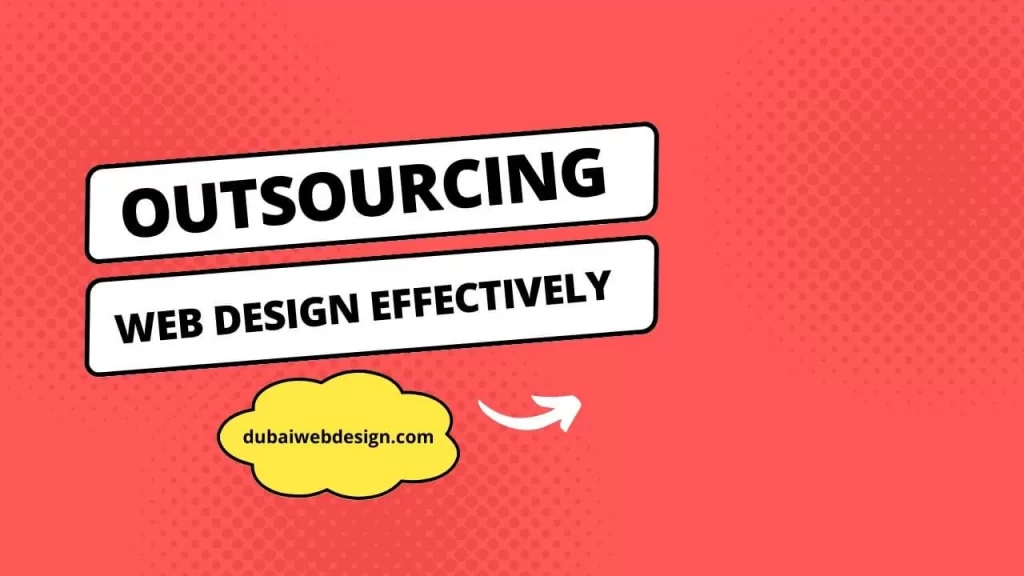How To Outsource Web Design Effectively In 2023? (A Complete Guide)
In the digital age, a strong online presence is crucial for businesses to succeed. Your website is often the first impression customers have of your brand, so its design and functionality are paramount.
However, not all businesses have the in-house resources to tackle web design projects effectively. This is where outsourcing web design comes into play.
In this blog post, we will delve into the key strategies for how to outsource web design effectively ensuring a seamless collaboration and a top-notch final product.
How To Outsource Web Design Effectively ( Top 10 Factors)
1. Define Your Goals and Requirements
Before you start searching for a web design partner, it’s essential to outline your project goals, expectations, and requirements. Are you looking for a simple informational site or a complex e-commerce platform?
Determine the features, design elements, and functionalities you want your website to have. A clear outsourcing web design will help you communicate your needs accurately to potential outsourcing partners.
2. Research and Shortlist Potential Partners
Take the time to research potential web design agencies or freelancers. Look at their portfolios, client testimonials, and case studies to gauge their expertise and style.
Consider their experience in your industry and their ability to deliver the type of website you’re envisioning. Create a shortlist of candidates that align with your vision and requirements.
Thoroughly research potential partners by reviewing their portfolios and past work. Look for projects that align with your industry and design preferences.
Additionally, consider their reputation within the web design community, their client testimonials, and the technologies they specialize in. This research phase will help you create a shortlist of candidates that match your vision.
3. Communicate Clearly
Effective communication is the cornerstone of successful outsourcing. Clearly articulate your expectations, project details, timelines, and any specific design elements you want to incorporate.
Regular and open communication will help avoid misunderstandings and ensure that both parties are on the same page throughout the project.
Maintain regular check-ins to discuss progress, address any concerns, and provide feedback. Clear communication minimizes misunderstandings and ensures your expectations are met.
4. Set Realistic Budgets and Timelines
The best outsourcing web designing guide suggests that the project should be cost-effective. It is also crucial to set a realistic budget based on the complexity of your project and the quality you’re aiming for.
Be prepared to invest in a quality website that reflects your brand effectively. Similarly, establish a realistic timeline for the project’s completion, considering the design, development, and testing phases.
Budgeting for outsourced web design involves finding a balance between quality and cost. Set a realistic budget that accounts for design, development, testing, and potential revisions. Align your budget with your project’s complexity and your expectations for a high-quality outcome.
5. Assess Technical Proficiency
When outsourcing, ensure that your chosen partner has a strong technical background. Check whether they are well-versed in modern design trends, responsive design principles, user experience (UX) best practices, and SEO considerations. A well-designed website is not just visually appealing but also functional and optimized for search engines.
In addition to a visually appealing design, they should have expertise in responsive design. This ensures that your website functions seamlessly on various devices and is well-versed in user experience (UX) and user interface (UI) design principles.
6. Collaborate on Design and Functionality
While you’re outsourcing the design process, remember that your input is invaluable. Collaborate closely with the designers to provide feedback, suggest improvements, and approve design mockups. This ensures that the final product aligns with your brand identity and resonates with how to outsource web design effectively.
7. Test Rigorously
Before launching the website, conduct thorough testing to identify any bugs, glitches, or usability issues. Check the website’s compatibility across different devices, browsers, and operating systems. A seamless user experience is essential for retaining visitors and achieving your conversion goals.
Thorough testing is crucial to ensure your website functions flawlessly. Test the website on various devices, browsers, and screen sizes to identify any compatibility issues. Additionally, check for broken links, forms that don’t work, and any other technical glitches.
8. Maintain a Long-Term Relationship
Outsourcing web design is not just a one-time transaction. Cultivate a long-term relationship with your design partner. As your business evolves, you may need updates, enhancements, or even a complete redesign. Maintaining a positive relationship can ensure smoother collaboration in the future.
Outsourcing web design tips & tricks must be applied once your business evolves. You may require updates, optimizations, and new features.
A long-term collaboration allows your partner to gain a deep understanding of your brand and its needs, making future projects more efficient and effective.
9. Protect Your Intellectual Property
Make sure to establish clear terms regarding the ownership of design files, source code, and other project assets. This helps prevent any potential conflicts over intellectual property rights down the road. Clearly define ownership rights and intellectual property in your contract or agreement.
This prevents any potential disputes over who owns the design files, source code, and other project assets. Establishing these terms upfront safeguards your interests and prevents complications in the future.
10. Seek Feedback and Refine the Process
After the project is complete, gather feedback from your team and users. Analyze the website’s performance and collect insights on user interactions. Use this feedback to refine your outsourcing process and enhance the effectiveness of future collaborations.
Analyze website analytics to understand user behavior and interactions. This data can guide you in making improvements and refinements to the website’s design and functionality.
Additionally, reflect on the outsourcing process itself what went well, what could be improved, and how you can make future collaborations even more successful.
The Last Line
In conclusion, how to outsource web design effectively can be a strategic decision to create a captivating online presence for your business. By defining your goals, communicating effectively, collaborating closely, and maintaining a strong partnership.
You can ensure that the outsourcing process is seamless and yields a website that truly represents your brand’s values and goals. Remember, the key lies in finding the right balance between your vision and the expertise of your chosen design partner.




